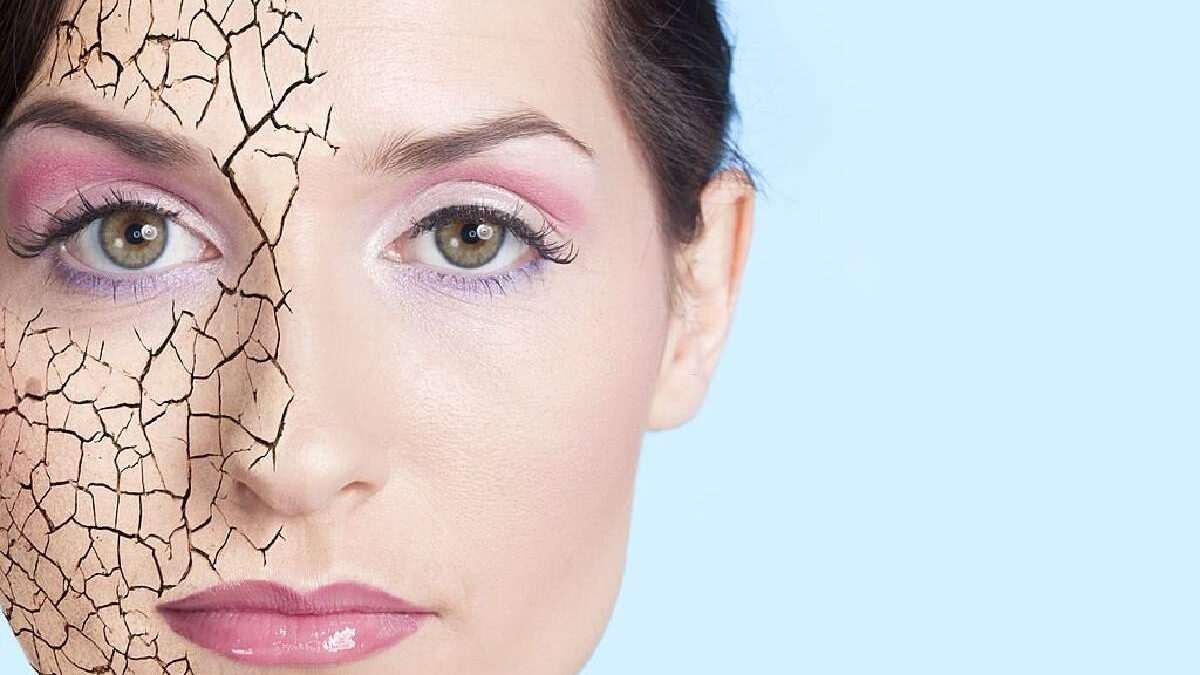Dry skin of the face – The skin of the face is one of our most important body parts since it is a much finer and more delicate skin than that of the other parts of the body, and it is also exposed throughout the year to different factors that can damage it.
Causes of dry facial skin
Our body has a mechanism that allows it to keep the epidermis’s most superficial layer hydrated, known as the stratum corneum. When that mechanism isn’t working correctly, moisture loss can lead to irritation and dry skin.
Dry facial skin often feels tight and uncomfortable after washing unless a moisturizer or skin cream is applied. Dryness is exacerbated by wind, extreme temperatures, and air conditioning, all of which cause the skin to tighten, crack, or peel.
The skin can also appear dull, especially on the cheeks and around the eyes, and develop small expression lines in those areas and corners of the mouth.
Dry skin on the face means the moisture barrier weakened,
resulting in excessive transepidermal water loss, where too much moisture evaporates from the skin into the atmosphere. That skin type depends on internal factors that cannot influenced, such as genetics, health problems and age. However, external, environmental, and seasonal triggers can also avoided.
Dry skin in winter
The cold or humidity outside and the sweltering heat inside can be the main responsible for the skin drying out more during the winter. Therefore, it is the perfect time to start using facial moisturizers that guarantee high hydration. And don’t forget to moisturize your lips! Some people also find it helpful to use an indoor humidifier.
dry skin in summer
Air conditioning in summer can exacerbate dry skin, just like heating in winter, as it reduces ambient humidity. Therefore, if you spend many hours in air-conditioned environments, you should use a moisturizer that provides a higher hydration level. Chlorine from swimming pools and salt from the sea also harm dry skin unless you rinse your face with clean water immediately after bathing. Air travel also causes dehydration. To prevent that uncomfortable dryness, you should apply moisturizers frequently during the flight.
Remember that dry facial skin often becomes “tight” and creates a feeling of discomfort after washing. This is why it’s good to follow it up with products like moisturising restorative hydration cream to help calm the skin.
Creams for dry skin:
To counteract dry skin on your face, you should use moisturizing creams that contain:
Hyaluronic Acid
Found naturally in the skin, it is a powerful moisturizing agent that can absorb up to 1,000 times its weight in water. Over time our skin loses hyaluronic acid, but formulas in the Neutrogena ® Hydro Boost range enriched with hyaluronic acid help keep skin hydrated and ‘plumped’, resulting in soft, smooth skin.
Glycerine
is an excellent and effective moisturizing agent since it attracts water, either from the air or the deeper layers of the skin, to lubricate the stratum corneum, the most superficial layer.
Sunscreen
Sunscreens contain different formulations and provide different levels of protection. Sun exposure can be particularly harmful to people with dry facial skin because it can cause structural damage that adds to the ageing of the top layer of skin, which is already suffering from a weakened moisture barrier.
Those with dry facial skin may feel better using a physical sunscreen that contains ingredients like micronized zinc oxide or titanium dioxide instead of choosing a chemical protectant with ingredients like octanoate or avobenzone. In any case, remember that broad-spectrum sunscreens will help keep your skin healthier and provide valuable hydration.
We recommend you consult a dermatologist or your family doctor to provide you with the most appropriate treatment guidelines for your skin type.

